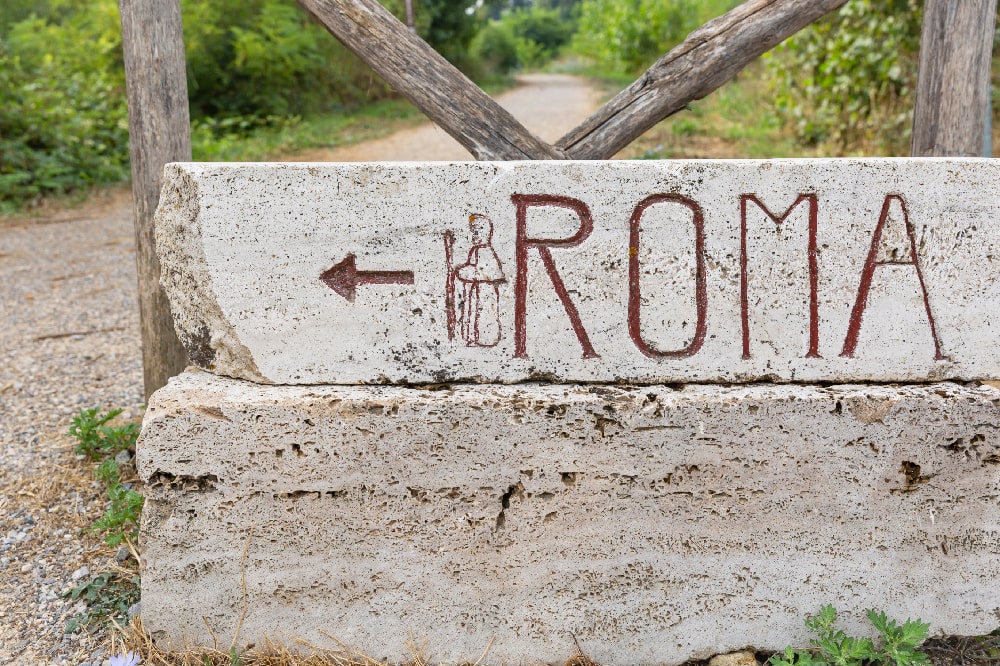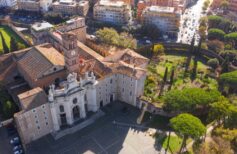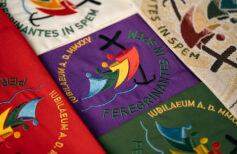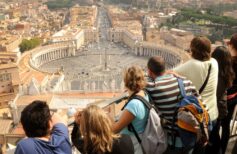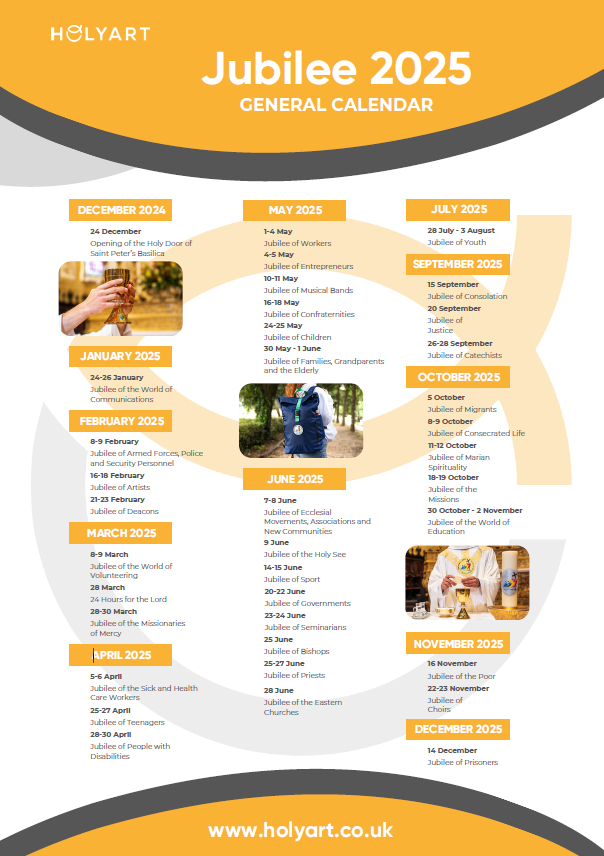The Pilgrim’s Credential is a precious and indispensable document for anyone wishing to undertake a devotional pilgrimage. That’s why it’s essential to obtain it given the Jubilee 2025.
Contents [hide]
With the Jubilee 2025 and the many pilgrimage itineraries planned for those who want to take part, foremost among them the pilgrimage to Rome, particularly the visit to the Seven Churches or the Jubilee Churches, necessary to obtain plenary indulgence, it is advisable to organize in advance. The upcoming Jubilee will attract at least 32 million pilgrims to Rome, and it is good for those who wish to undertake this devotional journey to know that there are rules to respect and benefits dedicated to pilgrims worldwide. Therefore, it becomes important to obtain the Pilgrim’s Credential. But what is it?

What is the Pilgrim’s Credential
The Pilgrim’s Credential, or Pilgrim’s Passport, is a fundamental document for those who travel one of the pilgrimage routes, from the Via Francigena to the Camino de Santiago de Compostela, which offers those who possess it a series of benefits, from the possibility of accessing accommodation facilities at reduced prices to discounts at numerous restaurants and bars along the way to advantageous tickets for affiliated transport, means. Each Credential can be requested at various designated offices or parishes.
Pilgrimages and pilgrim passport
We had already talked about the Pilgrim’s Credential in an article dedicated to the Camino de Santiago de Compostela, one of the oldest and most famous religious pilgrimage routes in the world. It extends through various roads throughout Europe, ultimately converging in the city of Santiago de Compostela, Spain, where the tomb of Saint James, one of the twelve apostles of Jesus, is located. Since the Middle Ages, it has attracted thousands of pilgrims from all over Europe, eager to venerate the relics of the Holy Apostle and to obtain plenary indulgence associated with the completion of the pilgrimage. To demonstrate that they had undertaken the journey for religious reasons and therefore deserved indulgence, pilgrims had to obtain an official document called the Compostela, which attested to the completion of the pilgrimage to the tomb of Saint James.

Today, to obtain the Compostela, which is still issued by the ecclesiastical authority of Santiago, it is necessary to demonstrate that at least 100 kilometres on foot (or 200 by bicycle) have been travelled along one of the main routes of the Camino. Pilgrims must present their Pilgrim’s Credential, a kind of passport that is stamped at each stage of the journey and serves as proof of the completed journey. However, it is important to emphasize that the Compostela is only issued to those who have undertaken the Camino for genuine religious reasons, not for tourist or sporting purposes. The Pilgrim’s Credential for the Camino de Santiago can be obtained at various locations, including the International Pilgrim Welcome Center, located at Rúa Carretas, 33, as well as at the headquarters of pilgrim confraternities, hostels, and parishes along the route. Additionally, the Associations of the Friends of the Camino de Santiago, present worldwide, offer the possibility of obtaining the Credential by presenting an identification document attesting to the identity of the applicant.

The Via Francigena, with its approximately 2000 km, connecting Canterbury, England, to Santa Maria di Leuca in Puglia, crossing France and Switzerland, represents a journey through the history, culture, and spirituality of medieval Europe. Its roads lead pilgrims through breathtaking landscapes, from open fields to majestic forests, from picturesque villages to cities rich in history and art. The Pilgrim’s Credential of the Via Francigena is distributed by the European Association of the Via Francigena (AEVF), and the pilgrim must have it stamped along the route, at tourist offices, parishes, accommodation facilities, and refreshment points. It is not only an identification document that offers discounts and benefits but also contributes fundamentally to supporting various activities aimed at maintaining and promoting the route. Through its acquisition, pilgrims contribute to the updating and distribution of maps, to the maintenance and updating of the free App available for iPhone and Android, to follow the route from Canterbury to Rome via GPS, to updating the database of accommodation facilities along the route, to maintaining the website and other information channels of the AEVF, to supporting and promoting the Via Francigena as an international cultural itinerary, to obtain UNESCO recognition.
Another example of Pilgrim’s Credential is the Credential of the Way of St. Francis, accompanied by the Testimonium Viae Francisci. The Credential of the Way of St. Francis is the special Pilgrim’s Credential issued to those who undertake the Way of St. Francis, an itinerary that connects various significant places related to the life and preaching of St. Francis of Assisi. It is an authentic pilgrimage experience, designed to relive the essence of Franciscan spirituality for participants and immerse them in the lands that the Saint traveled during his preaching journeys.

To obtain the Credential of the Way of St. Francis, it is necessary to send the completed form with one’s data and the approximate start date of the pilgrimage at least 3 weeks before departure if departing from Italy, at least 2 months before if departing from abroad. The credential-sending service is free and is managed by the Credential Office at the PiccolAccoglienza of the Diocese of Gubbio. The Credential of the Way of St. Francis is sent via postal service.
The Testimonium Peregrinationis Peractae ad Sanctorum Francisci et Clarae Civitatem is instead the certificate that certifies the completion of the pilgrimage to the tomb of St. Francis in Assisi. Already in the Middle Ages, the pilgrimage was considered valid only if the pilgrim reached the tomb of the Saint. The Testimonium retains great value as a precious memory of the experience lived and a tangible symbol of the values and feelings discovered during the journey. To obtain it, it is necessary to have travelled at least the last 100 km on foot or the last 200 km by bicycle until reaching the tomb of St. Francis. The stamps and dates on one’s credentials attest to the journey completed and are essential to obtaining the Testimonium.
Pilgrim’s Card for Jubilee 2025
Given the Jubilee of 2025, the Pilgrim’s Card has been introduced, an innovative free and personal digital solution, indispensable for participating in Jubilee events. The pilgrim who wishes to obtain it must register in advance on the dedicated portal or download the official Jubilee app. They will receive a personalized QR code and will be able to organize their pilgrimage route better. In particular, the Pilgrim’s Card will allow registration for the pilgrimage to the Holy Door of St. Peter, facilitating access to it. This possibility is not guaranteed, given the expected influx of pilgrims, but also for all the other main events of the Jubilee. It will also be possible to request registrations and facilities for groups and manage one’s reservation independently, changing the date, and time, and entering details and special requests. Additionally, a Pilgrim’s Services Card is provided, giving them access to discounts on transportation, accommodation, bars, and restaurants, as well as significant reductions on tickets for museums and the many cultural events planned in Rome in conjunction with the Jubilee events.

Holy Door: what it is and what its opening represents
The opening of the Holy Door marks the beginning of the Jubilee, but it also represents a spiritually evocative…

